Sidebar
Security Operations

My ipset hash is full!? I'm using Ubuntu Server and I created a separate fail2ban jail that uses "iptables-ipset-proto6-allports" as their ban action (thus using ipset instead of iptables). However, today I seem to hit the limit: `stderr: 'ipset v7.15: Hash is full, cannot add more elements'`. This can be confirmed by running the ipset -t list command: ```sh Name: f2b-manual Type: hash:ip Revision: 5 Header: family inet hashsize 32768 maxelem 65536 timeout 0 bucketsize 12 initval 0xbc28aef1 Size in memory: 2605680 References: 1 Number of entries: 65571 ``` Where the 65571 entries exceeds the maxelem (65536). So what now?? Could I create a banlist in a txt file or something? I just want to ban some large tech corps: https://gitlab.melroy.org/-/snippets/619
I use FreeOTP+ which is supposed to be developed by people from the Fedora project and is protected by fingerprint on Pixel. I discovered that my 2FA was disabled on lemmy.world after I logged out and then logged back in a day later instead of just keeping the auth cookie active in Vanadium. Since 2FA is required to change settings, how was this accomplished and what can I do to ensure that it doesn't happen again?
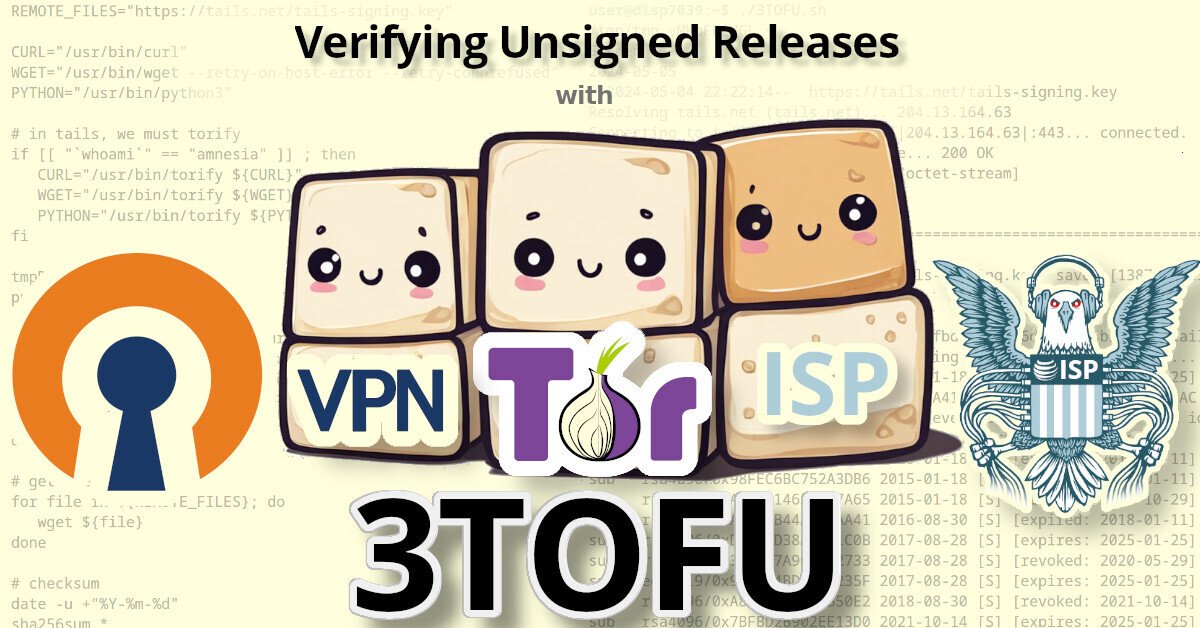 tech.michaelaltfield.net
tech.michaelaltfield.net
# 3TOFU: Verifying Unsigned Releases **By Michael Altfield** License: CC BY-SA 4.0 https://tech.michaelaltfield.net This article introduces the concept of \"3TOFU\" \-- a harm-reduction process when downloading software that cannot be verified cryptographically. | [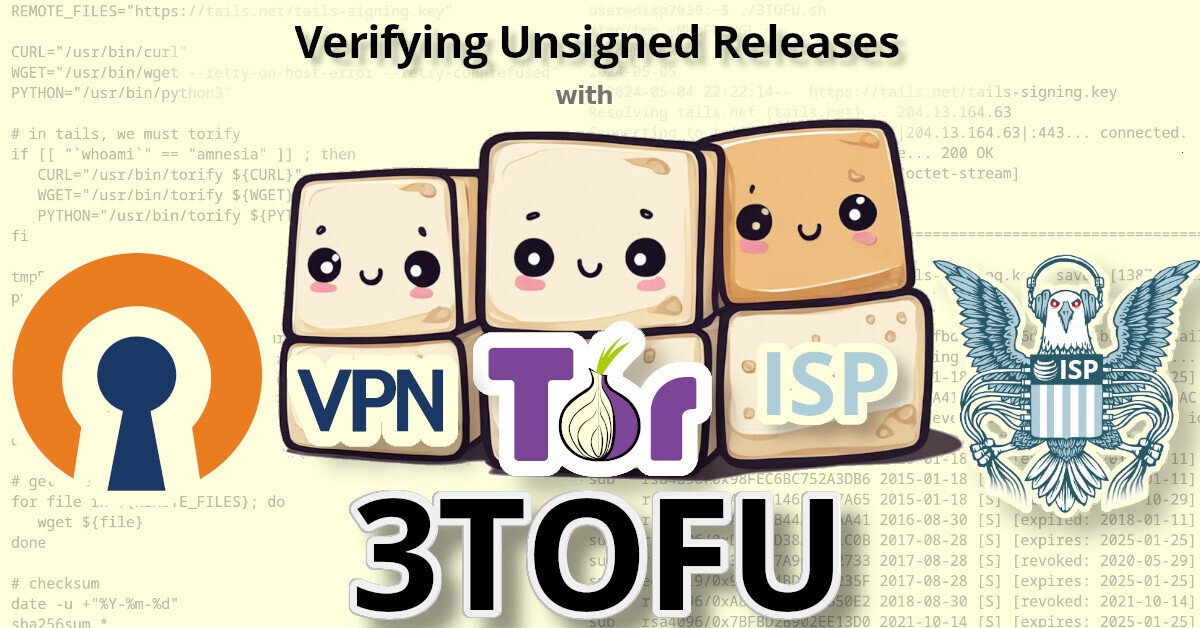](https://tech.michaelaltfield.net/2024/08/04/3tofu/) | |:--:| | Verifying Unsigned Releases with [3TOFU](https://tech.michaelaltfield.net/2024/08/04/3tofu/) | > ⚠ NOTE: This article is about harm reduction. > > It is dangerous to download and run binaries (or code) whose authenticity you cannot verify (using a cryptographic signature from a key stored offline). However, sometimes we cannot avoid it. If you\'re going to proceed with running untrusted code, then following the steps outlined in this guide may reduce your risk. # TOFU TOFU stands for [Trust On First Use](https://en.wikipedia.org/wiki/Trust_on_first_use). It\'s a ([often abused](https://security.stackexchange.com/a/238912/213165)) concept of downloading a person or org\'s signing key and just blindly trusting it (instead of [verifying it](https://en.wikipedia.org/wiki/Web_of_trust)). ## 3TOFU 3TOFU is a process where a user downloads something three times at three different locations. If-and-only-if all three downloads are identical, then you trust it. # Why 3TOFU? During the [Crypto Wars](https://en.wikipedia.org/wiki/Crypto_Wars) of the 1990s, it was illegal to export cryptography from the United States. In 1996, after intense public pressure and [legal challenges](https://en.wikipedia.org/wiki/Bernstein_v._United_States), the government officially permitted export with the 56-bit [DES cipher](https://en.wikipedia.org/wiki/Data_Encryption_Standard) \-- which was a known-[vulnerable](https://en.wikipedia.org/wiki/Data_Encryption_Standard#Chronology) cipher. | [](https://tech.michaelaltfield.net/2024/08/04/3tofu/) | |:--:| | The EFF\'s [Deep Crack](https://en.wikipedia.org/wiki/EFF_DES_cracker) proved DES to be insecure and pushed a switch to 3DES. | But there was a simple way to use insecure DES to make secure messages: **just use it three times**. 3DES (aka \"[Triple DES](https://en.wikipedia.org/wiki/Triple_DES)\") is the process encrypting a message using the insecure symmetric block cipher (DES) three times on each block, to produce an actually secure message (from known attacks at the time). 3TOFU (aka \"Triple TOFU\") is the process of downloading a payload using the insecure method (TOFU) three times, to obtain the payload that\'s magnitudes less likely to be maliciously altered. # 3TOFU Process To best mitigate targeted attacks, 3TOFU should be done: 1. On **three distinct days** 2. On **three distinct machines** (or VMs) 3. Exiting from **three distinct countries** 4. Exiting using **three distinct networks** For example, I\'ll usually execute - **TOFU #1/3** in TAILS (via **Tor**) - **TOFU #2/3** in a Debian VM (via **VPN**) - **TOFU #3/3** on my daily laptop (via **ISP**) The possibility of an attacker maliciously modifying something you download over your ISP\'s network are quite high, depending on which country you live-in. The possibility of an attacker maliciously modifying something you download onto a VM with a freshly installed OS over an encrypted VPN connection (routed internationally and exiting from another country) is much less likely, but still possible \-- especially for a [well-funded adversary](https://en.wikipedia.org/wiki/Advanced_persistent_threat). The possibility of an attacker maliciously modifying something you download onto a VM running a hardened OS (like [Whonix](https://www.whonix.org/) or [TAILS](https://tails.net/)) using a hardened browser (like [Tor Browser](https://www.torproject.org/download/)) over an anonymizing network (like Tor) is quite unlikely. **The possibility for someone to execute a network attack on all three downloads is very near-zero** \-- especially if the downloads were spread-out over days or weeks. ## 3TOFU bash Script I provide the following bash script as an example snippet that I run for each of the 3TOFUs. ``` REMOTE_FILES="https://tails.net/tails-signing.key" CURL="/usr/bin/curl" WGET="/usr/bin/wget --retry-on-host-error --retry-connrefused" PYTHON="/usr/bin/python3" # in tails, we must torify if [[ "`whoami`" == "amnesia" ]] ; then CURL="/usr/bin/torify ${CURL}" WGET="/usr/bin/torify ${WGET}" PYTHON="/usr/bin/torify ${PYTHON}" fi tmpDir=`mktemp -d` pushd "${tmpDir}" # first get some info about our internet connection ${CURL} -s https://ifconfig.co/country | head -n1 ${CURL} -s https://check.torproject.org | grep Congratulations | head -n1 # and today's date date -u +"%Y-%m-%d" # get the file for file in ${REMOTE_FILES}; do wget ${file} done # checksum date -u +"%Y-%m-%d" sha256sum * # gpg fingerprint gpg --with-fingerprint --with-subkey-fingerprint --keyid-format 0xlong * ``` Here\'s one example execution of the above script (on a debian DispVM, executed with a VPN). ``` /tmp/tmp.xT9HCeTY0y ~ Canada 2024-05-04 --2024-05-04 14:58:54-- https://tails.net/tails-signing.key Resolving tails.net (tails.net)... 204.13.164.63 Connecting to tails.net (tails.net)|204.13.164.63|:443... connected. HTTP request sent, awaiting response... 200 OK Length: 1387192 (1.3M) [application/octet-stream] Saving to: ‘tails-signing.key’ tails-signing.key 100%[===================>] 1.32M 1.26MB/s in 1.1s 2024-05-04 14:58:56 (1.26 MB/s) - ‘tails-signing.key’ saved [1387192/1387192] 2024-05-04 8c641252767dc8815d3453e540142ea143498f8fbd76850066dc134445b3e532 tails-signing.key gpg: WARNING: no command supplied. Trying to guess what you mean ... pub rsa4096/0xDBB802B258ACD84F 2015-01-18 [C] [expires: 2025-01-25] Key fingerprint = A490 D0F4 D311 A415 3E2B B7CA DBB8 02B2 58AC D84F uid Tails developers (offline long-term identity key) <tails@boum.org> uid Tails developers <tails@boum.org> sub rsa4096/0x3C83DCB52F699C56 2015-01-18 [S] [expired: 2018-01-11] sub rsa4096/0x98FEC6BC752A3DB6 2015-01-18 [S] [expired: 2018-01-11] sub rsa4096/0xAA9E014656987A65 2015-01-18 [S] [revoked: 2015-10-29] sub rsa4096/0xAF292B44A0EDAA41 2016-08-30 [S] [expired: 2018-01-11] sub rsa4096/0xD21DAD38AF281C0B 2017-08-28 [S] [expires: 2025-01-25] sub rsa4096/0x3020A7A9C2B72733 2017-08-28 [S] [revoked: 2020-05-29] sub ed25519/0x90B2B4BD7AED235F 2017-08-28 [S] [expires: 2025-01-25] sub rsa4096/0xA8B0F4E45B1B50E2 2018-08-30 [S] [revoked: 2021-10-14] sub rsa4096/0x7BFBD2B902EE13D0 2021-10-14 [S] [expires: 2025-01-25] sub rsa4096/0xE5DBA2E186D5BAFC 2023-10-03 [S] [expires: 2025-01-25] ``` The TOFU output above shows that the release signing key from the TAILS project is a 4096-bit RSA key with a full fingerprint of \"`A490 D0F4 D311 A415 3E2B B7CA DBB8 02B2 58AC D84F`\". The key file itself has a sha256 hash of \"`8c641252767dc8815d3453e540142ea143498f8fbd76850066dc134445b3e532`\". When doing a 3TOFU, save the output of each execution. After collecting output from all 3 executions (intentionally spread-out over 3 days or more), diff the output. If the output of all three TOFUs match, then the confidence of the file\'s authenticity is very high. # Why do 3TOFU? Unfortunately, many developers think that hosting their releases on a server with https is sufficient to protect their users from obtaining a maliciously-modified release. But https won\'t protect you if: 1. Your DNS or publishing infrastructure is compromised ([it happens](https://github.com/cncf/tag-security/tree/main/supply-chain-security/compromises)), or 2. An attacker has just one (subordinate) CA in the user\'s PKI root store ([it happens](https://security.stackexchange.com/questions/234052/where-can-i-find-a-list-of-all-government-agencies-with-cas-in-pki-root-stores)) Generally speaking, publishing infrastructure compromises are detected and resolved within days and MITM attacks using compromised CAs are targeted attacks (to avoid detection). Therefore, a 3TOFU verification should thwart these types of attacks. > ⚠ Note on hashes: Unfortunately, many well-meaning developers erroneously think that cryptographic hashes provide authenticity, but cryptographic hashes do not provide authenticity \-- they provide integrity. > > Integrity checks are useful to detect corrupted data on-download; it does not protect you from maliciously altered data unless those hashes are cryptographically signed with a key whose private key isn\'t stored on the publishing infrastructure. # Improvements There are some things you can do to further improve the confidence of the authenticity of a file you download from the internet. ## Distinct Domains If possible, download your payload from as many distinct domains as possible. An adversary may successfully compromise the publishing infrastructure of a software project, but it\'s far less likely for them to compromise the project website (eg \'`tails.net`\') *and* their forge (eg \'`github.com`\') *and* their mastodon instance (eg \'`mastodon.social`\'). ## Use TAILS | [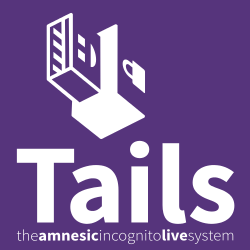](https://tech.michaelaltfield.net/2024/08/04/3tofu/) | |:--:| | [TAILS](https://tails.net/) is by far the best OS to use for security-critical situations. | If you are a high-risk target (investigative journalist, activist, or political dissident) then you should definitely use [TAILS](https://tails.net/) for one of your TOFUs. ## Signature Verification It\'s always better to verify the authenticity of a file using cryptographic signatures than with 3TOFU. Unfortunately, some companies like [Microsoft don\'t sign their releases](https://superuser.com/questions/1623134/how-to-cryptographically-verify-the-authenticity-and-integrity-of-microsoft-wind), so the only option to verify the authenticity of something like a Windows `.iso` is with 3TOFU. Still, whenever you encounter some software that is not signed using an offline key, please do us all a favor and [create a bug report](https://github.com/freedomofpress/dangerzone/issues/761) asking the [developer to sign](https://github.com/osTicket/osTicket/issues/5750) their releases with PGP (or minisign or signify or *something*). ## 4TOFU 3TOFU is easy because [Tor is free](https://www.torproject.org/download/) and most people have access to a VPN (corporate or [commercial](https://www.privacyguides.org/en/vpn/) or an [ssh socks proxy](/2015/05/31/tor-vpn-in-tails-to-bypass-tor-blocking/)). But, if you\'d like, you could also add [i2p](https://en.wikipedia.org/wiki/I2P) or some [other proxy network](https://en.wikipedia.org/wiki/Internet_censorship_circumvention#Software) into the mix (and do 4TOFU).
The NGINX access.log of my VPS is showing a curiosity. Instead of a simple request like this... ``` "GET / HTTP/1.1" ``` ...regular requests are coming in that look like this `"\x03\x00\x00\x13\x0E\xE0\x00\x00\x00\x00\x00\x01\x00\x08\x00\x03\x00\x00\x00"` Is this some kind of hack attempt? Here's an example of a full line from the log... `15.204.204.182 - - [24/Apr/2024:15:59:47 +0000] "\x03\x00\x00\x13\x0E\xE0\x00\x00\x00\x00\x00\x01\x00\x08\x00\x03\x00\x00\x00" 400 166 "-" "-"` EDIT: For what it might be worth, most of these requests come in singularly, from different IP addresses. Once (that I've noticed) repeated attempts came in quickly from one specific IP.
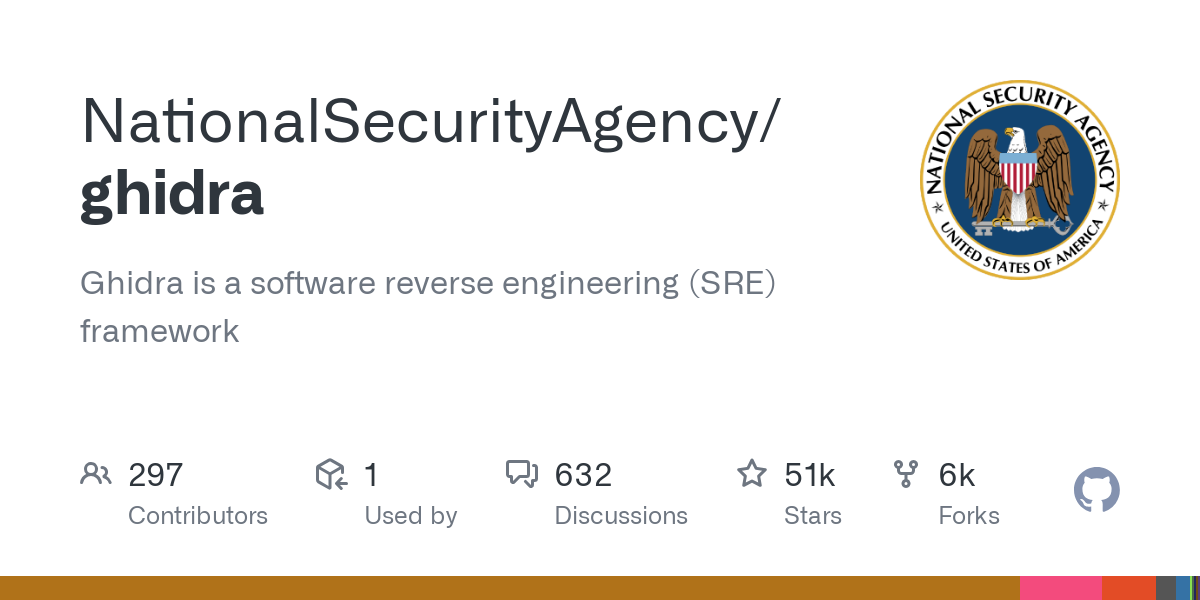 github.com
github.com
Ghidra training classes from NSA::undefined
 tierzerosecurity.co.nz
tierzerosecurity.co.nz
An intro to automated evasion and compilation of .NET offensive tools::Information Security Services. Offensive Security, Penetration Testing, Mobile and Application, Purple Team, Red Team
Phrack #71: Call For Paper::Phrack staff website.
 blog.plerion.com
blog.plerion.com
Hacking Terraform state to gain code execution and privilege escalation::undefined
 jfrog.com
jfrog.com
Data Scientists Targeted by Malicious Hugging Face ML Models with Silent Backdoor::Is Hugging Face the target of model-based attacks? See a detailed explanation of the attack mechanism and what is required to identify real threats >
New Server Side Prototype Pollution Gadgets Scanner from Doyensec::Unveiling the Server-Side Prototype Pollution Gadgets Scanner
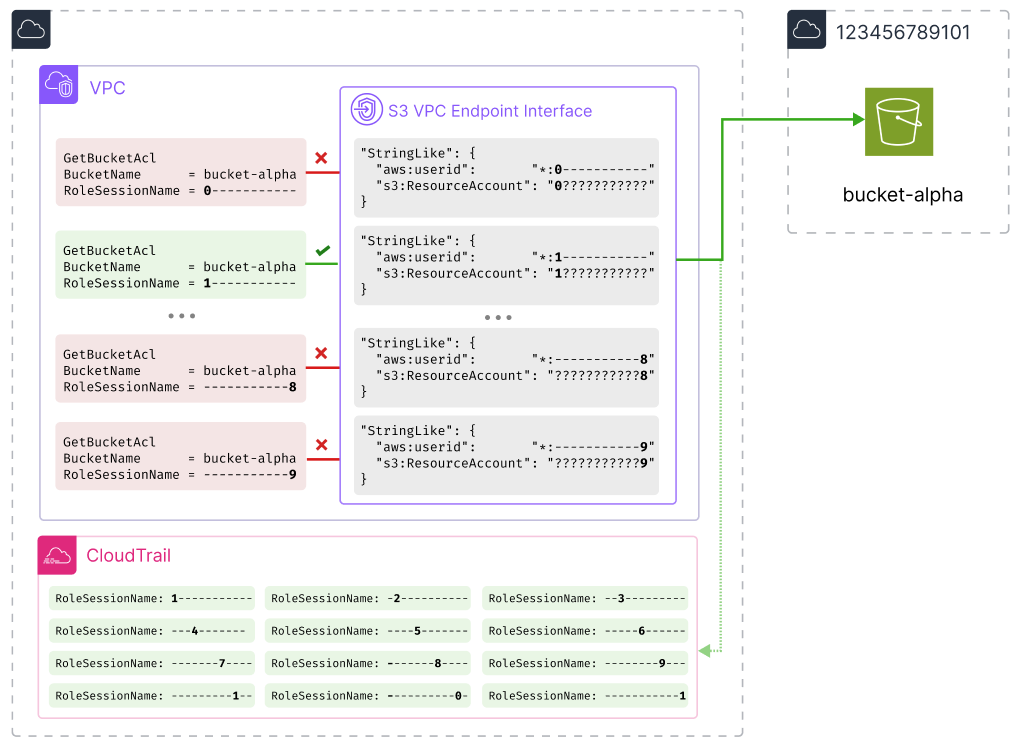 tracebit.com
tracebit.com
It's now possible to find the AWS Account ID for any S3 Bucket (private or public)::A technique to find the Account ID of a private S3 bucket.
“SubdoMailing” — Thousands of Hijacked Major-Brand Subdomains Found Bombarding Users With Millions of Malicious Emails::undefined
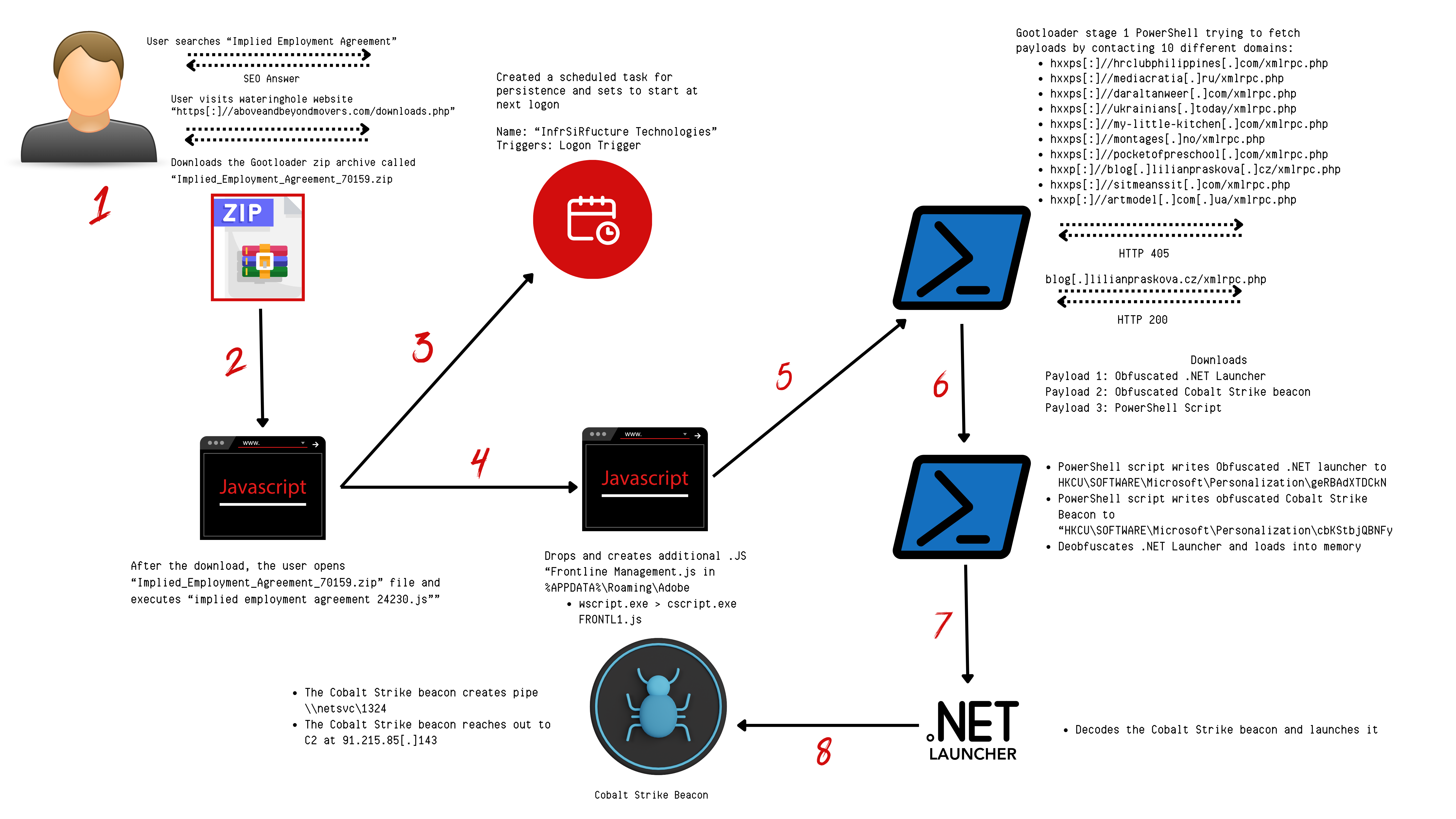 thedfirreport.com
thedfirreport.com
SEO Poisoning to Domain Control: The Gootloader Saga Continues::Key Takeaways More information about Gootloader can be found in the following reports: The DFIR Report, GootloaderSites, Mandiant, Red Canary, & Kroll. An audio version of this report can be … Read More
 www.labs.greynoise.io
www.labs.greynoise.io
Code injection or backdoor: A new look at Ivanti's CVE-2021-44529::In 2021, Ivanti patched a vulnerability that they called “code injection”. Rumors say it was a backdoor in an open source project. Let’s find out what actually happened!
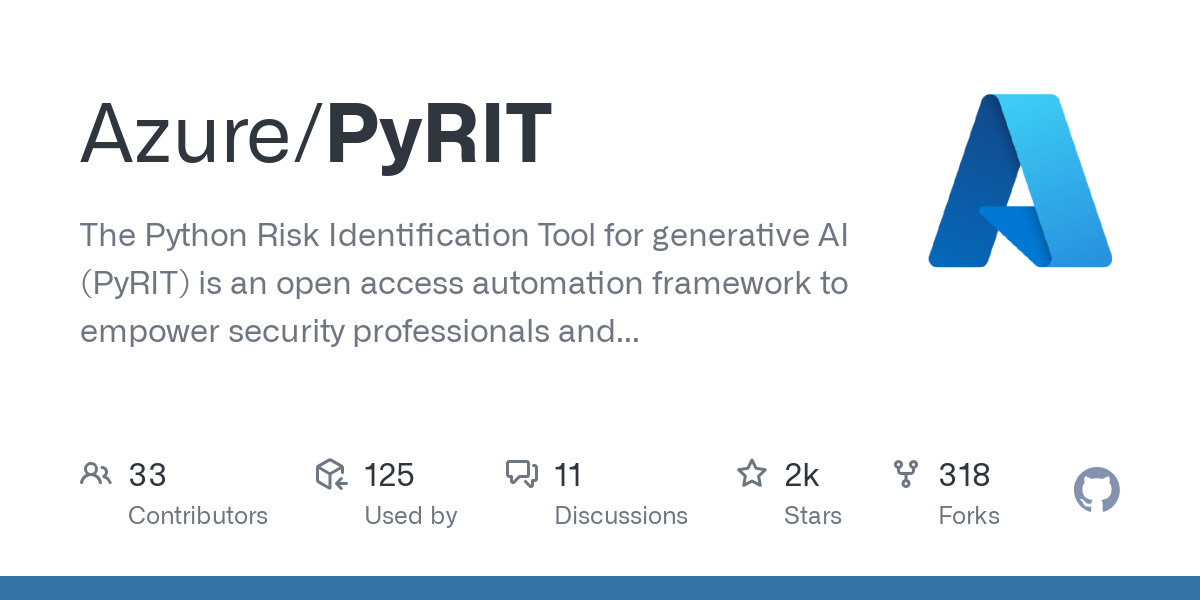 github.com
github.com
Python Risk Identification Tool for generative AI (PyRIT)::The Python Risk Identification Tool for generative AI (PyRIT) is an open access automation framework to empower security professionals and machine learning engineers to proactively find risks in their generative AI systems. - Azure/PyRIT
New TP-Link authentication Bypass!::undefined
 status.changehealthcare.com
status.changehealthcare.com
Optum / Change Healthcare Breach::Optum Solutions's Status Page - Update: Some applications are experiencing connectivity issues..
 blog.phylum.io
blog.phylum.io
Ongoing Malware Laced Developer Job Interviews::Phylum continues to discover malware polluting open-source ecosystems. In this blog post, we take a deep-dive into an npm package trying to masquerade as code profiler which actually installs several malicious scripts including a cryptocurrency and credential stealer. Curiously, the attacker attempted to hide the malicious code in a test
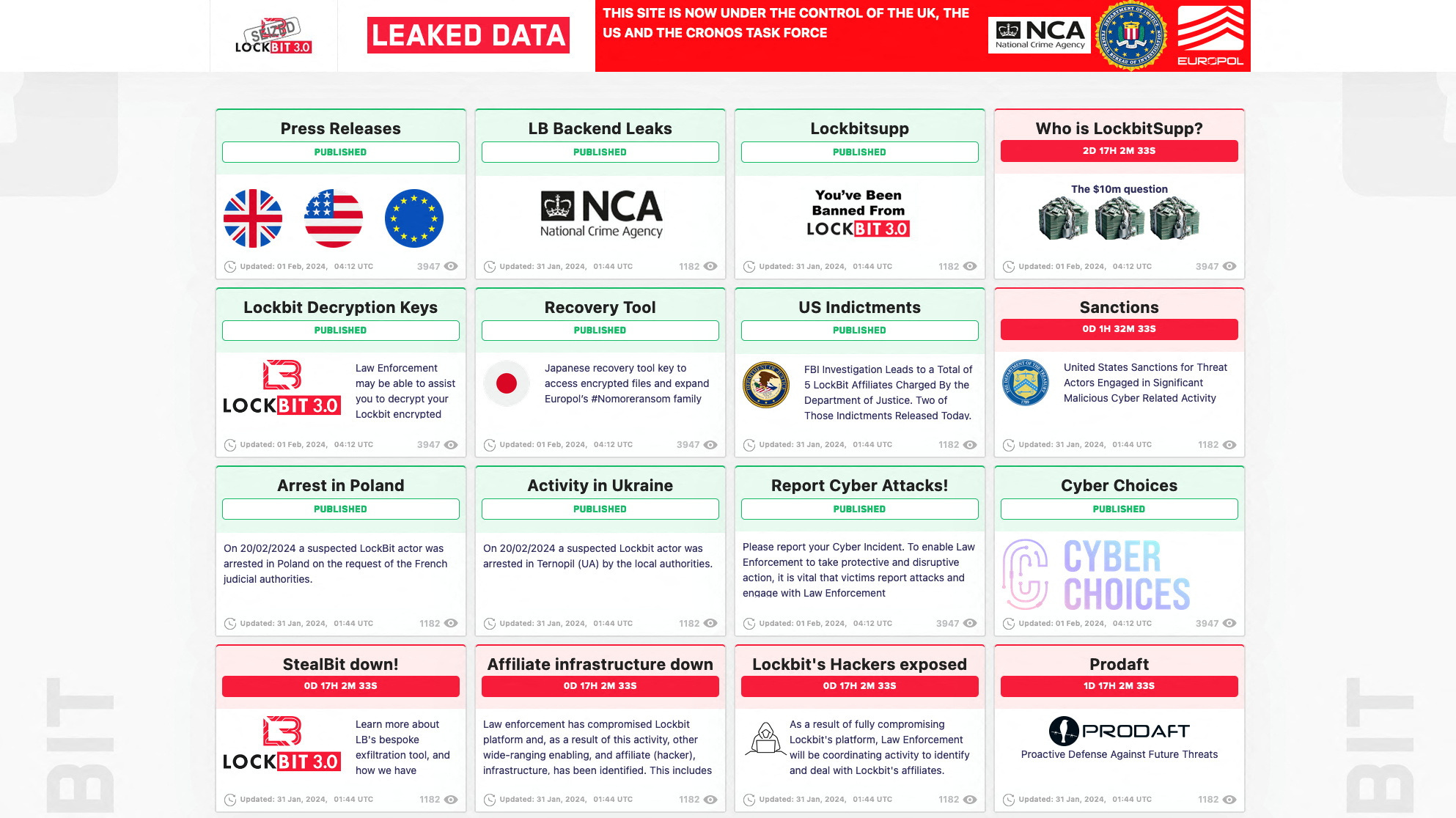 www.itnews.com.au
www.itnews.com.au
Lockbit Ransomeware global taketown::With indictments and arrests.
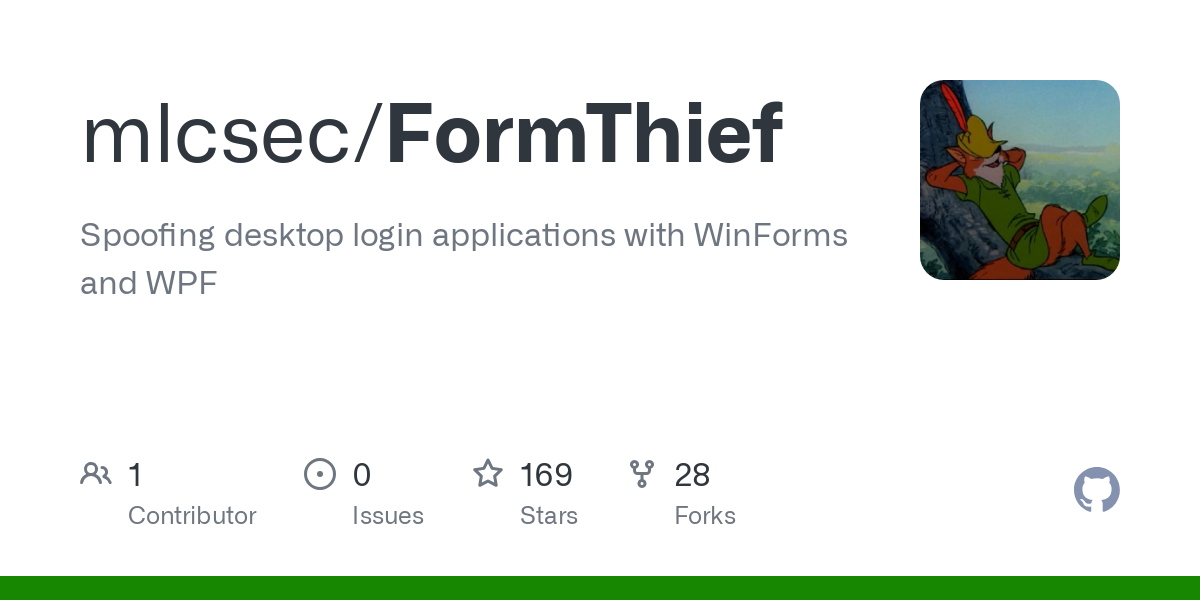 github.com
github.com
GitHub - mlcsec/FormThief: Spoofing desktop login applications with WinForms and WPF::Spoofing desktop login applications with WinForms and WPF - mlcsec/FormThief
 blog.securelayer7.net
blog.securelayer7.net
Ivanti Connect Secure Under Attack: Uncovering Five Exploitable CVEs - XXE::Time and again, securing you
Analysis of Mirai variant leveraging CVE-2023-1389::undefined
 attackshipsonfi.re
attackshipsonfi.re
Exploiting Unsynchronised Clocks::TL;DR According to data from RIPE, over 40% of computers attached to the Internet have a few seconds of clock drift, which with the right combination of headers, will make an HTTP response unintentionally cacheable. Background Like many parts of the HTTP model, caching has been extended and revised multiple times over the years. The result is a confusing set of response header values, which affect the way that the browser may or may-not cache the response.
 www.aquasec.com
www.aquasec.com
Snap Trap: The Hidden Dangers Within Ubuntu's Package Suggestion System::Aqua Nautilus researchers have identified a security issue that arises from the interaction between Ubuntu’s command-not-found package and the snap package repository. While command-not-found serves as a convenient tool for suggesting installations for uninstalled commands, it can be inadvertently manipulated by attackers through the snap repository, leading to deceptive recommendations of malicious packages. Additionally, our …
 decoded.avast.io
decoded.avast.io
Decrypted: Rhysida Ransomware - "we are now publicly releasing our decryptor for download to all victims of the Rhysida ransomware"::The team at Avast has developed a decryptor for the Rhysida ransomware and released it for public download. The Rhysida ransomware has been active since May 2023. As of Feb 2024, their TOR site lists 78 attacked companies, including IT (Information Technology) sector, healthcare, universities, and government organizations.
 www.cyberark.com
www.cyberark.com
Breach Analysis: APT29’s Attack on Microsoft - Password Spray & OAuth abuse.::undefined
 www.troyhunt.com
www.troyhunt.com
Troy Hunt: How Spoutible’s Leaky API Spurted out a Deluge of Personal Data::Ever hear one of those stories where as it unravels, you lean in ever closer and mutter “No way! No way! NO WAY!” This one, as far as infosec stories go, had me leaning and muttering like never before. Here goes: Last week, someone reached out to me with what
JSON Smuggling: A far-fetched intrusion detection evasion technique::undefined
Shellcode evasion using Wasm/Wat and Rust::undefined
 archive.org
archive.org
ShmooCon 2024 Videos are up!::ShmooCon 2024by Shmoo Group, various presentersThe videos in this collection are from ShmooCon 2024, which occurred on 12 - 14 January 2024, at the Washington...
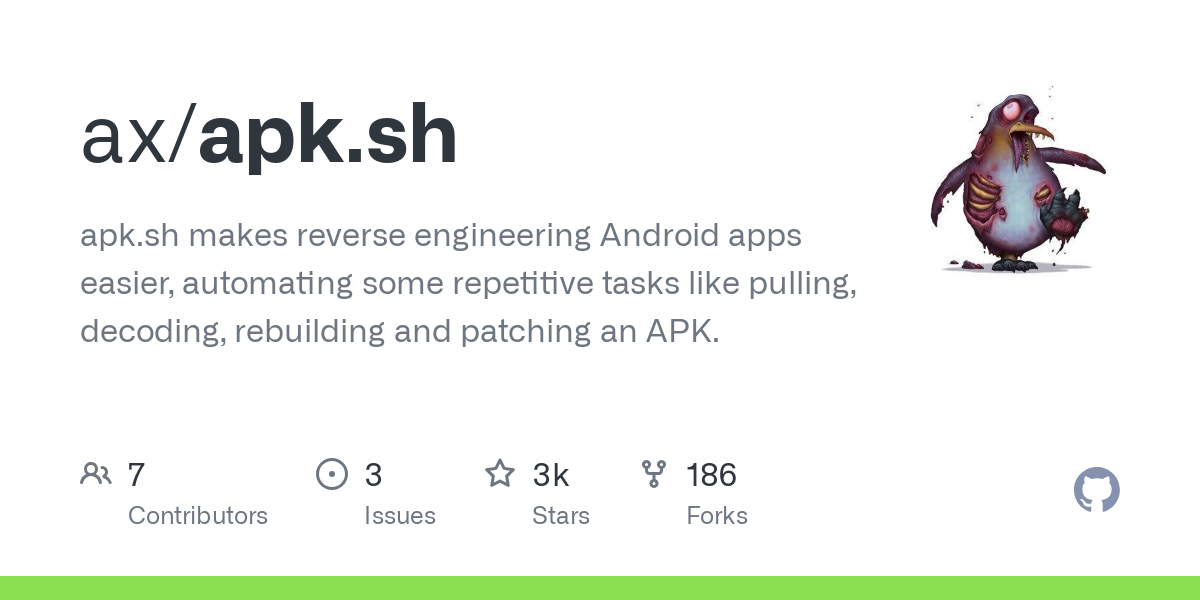 github.com
github.com
apk.sh makes reverse engineering Android apps easier, automating some repetitive tasks like pulling, decoding, rebuilding and patching an APK.::apk.sh makes reverse engineering Android apps easier, automating some repetitive tasks like pulling, decoding, rebuilding and patching an APK. - GitHub - ax/apk.sh: apk.sh makes reverse engineering Android apps easier, automating some repetitive tasks like pulling, decoding, rebuilding and patching an APK.
Trends in Phishing, Fraud, 'Dark AI Models', and how to better protect yourself.::We guard your domain, so you have peace of mind. Threat Visibility Platform.
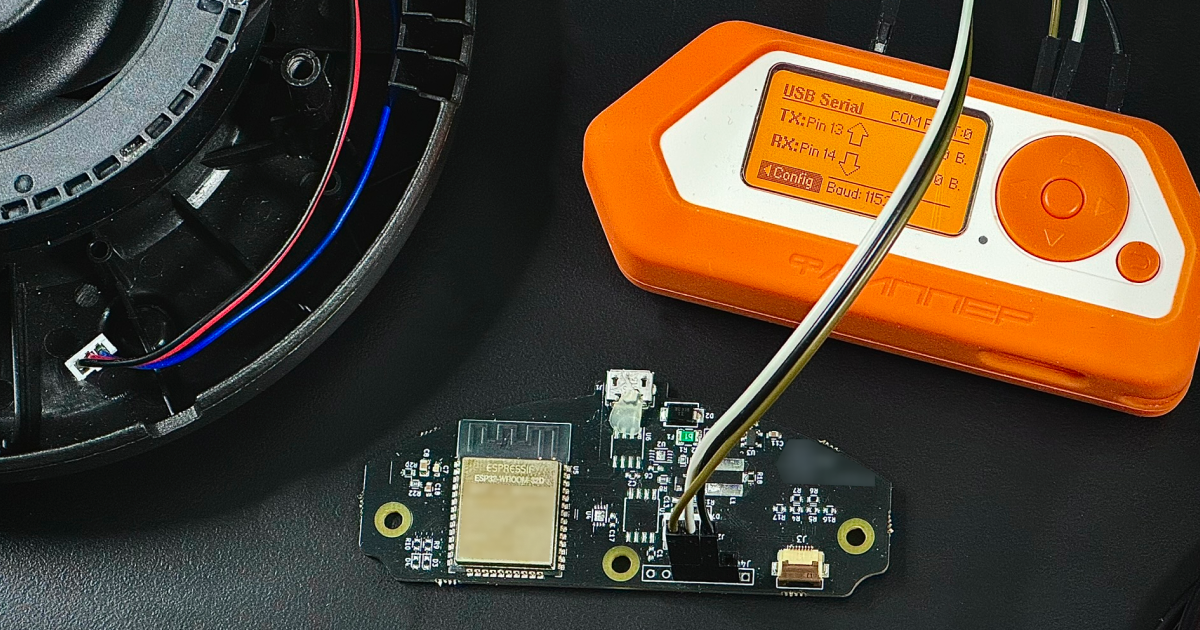 jmswrnr.com
jmswrnr.com
How I Hacked My Air Purifier to Remove Cloud Dependency [Detailed Write-Up]::undefined
 github.com
github.com
Deluder: Python utility for intercepting traffic of applications. Deluder can be used as an alternative for EchoMirage. It supports OpenSSL, GnuTLS, SChannel, WinSock and Linux Sockets out of the b...::Deluder is a tool for intercepting traffic of proxy unaware applications. Currently, Deluder supports OpenSSL, GnuTLS, SChannel, WinSock and Linux Sockets out of the box. ⚡ - GitHub - Warxim/deluder: Deluder is a tool for intercepting traffic of proxy unaware applications. Currently, Deluder supports OpenSSL, GnuTLS, SChannel, WinSock and Linux Sockets out of the box. ⚡
 anydesk.com
anydesk.com
AnyDesk Incident Response 2-2-2024::undefined
Your Security Program Is Shit::Very shit
Frog4Shell — FritzFrog Botnet Adds One-Days to Its Arsenal::undefined
 snyk.io
snyk.io
Leaky Vessels: Docker and runc Container Breakout Vulnerabilities - January 2024::Snyk Security Labs Team has identified four container breakout vulnerabilities in core container infrastructure components including Docker and runc, which also impacts Kubernetes.
CVE-2023-6246: Heap-based buffer overflow in the glibc's syslog()::undefined
